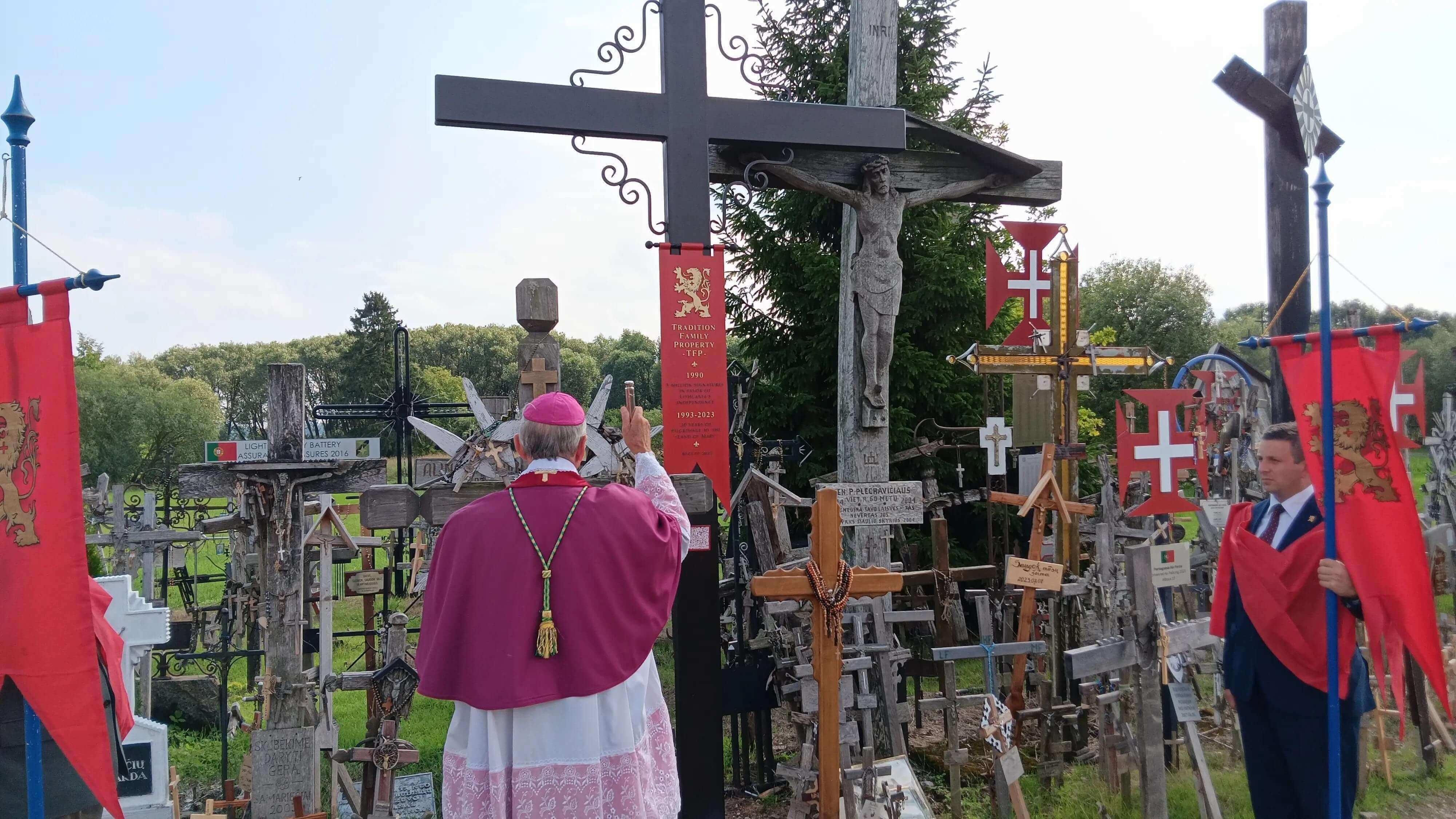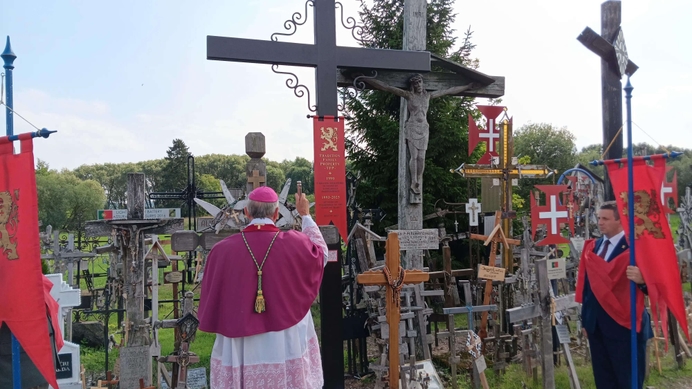
Cross commemorating 33 years of action by the TFPs for a free Lithuania erected on the Hill of Crosses in Šiauliai
In November 1989 a wave of discontent sweeping the countries behind the Iron Curtain caused the fall of the Berlin Wall. It was the beginning of an unstoppable avalanche that would overthrow the Soviet empire despite Gorbachev’s fallacious promises of Perestroika and Glasnost.
An important and even decisive step in the collapse of the Soviet colossus was taken by the Lithuanian Parliament on March 11, 1990, by declaring their country’s independence from the Moscow tyrants.
One of three Baltic countries facing the Russian Bear, tiny Lithuania unsuccessfully sought support from Western countries. In the United States, France, and elsewhere, its representatives received no support for their declaration of independence. Instead, they received defeatist advice trying to find a compromising solution with Moscow.
Lithuania’s declaration of independence was in danger of becoming a vain act that could cast the country into a tremendous humiliation that would only contribute to burying its people’s yearnings for freedom for more decades to come.
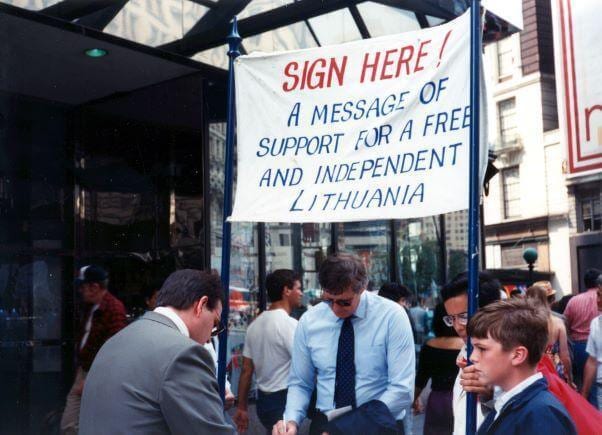
In this gloomy panorama full of apprehensions for Lithuania, on the initiative of Plinio Corrêa de Oliveira, at the end of May 1990, the Brazilian TFP took to the streets to collect signatures in support of Lithuania’s independence. It was soon joined in the task by the other TFPs spread across five continents. In a little over four months, the TFPs in 20 countries collected the largest valid petition in history at the time totaling 5,218,520 signatures.

The TFP campaign, widely reported by the international media, gave Lithuanian patriots new encouragement and hope. They saw there were people worldwide — practically twice as numerous as its population — who stretched to them a helping hand with a word of encouragement. This moral support that the TFPs gave Lithuania was decisive for Lithuanians to not allow themselves to be bamboozled by the suggestions for compromise coming from all over the West.
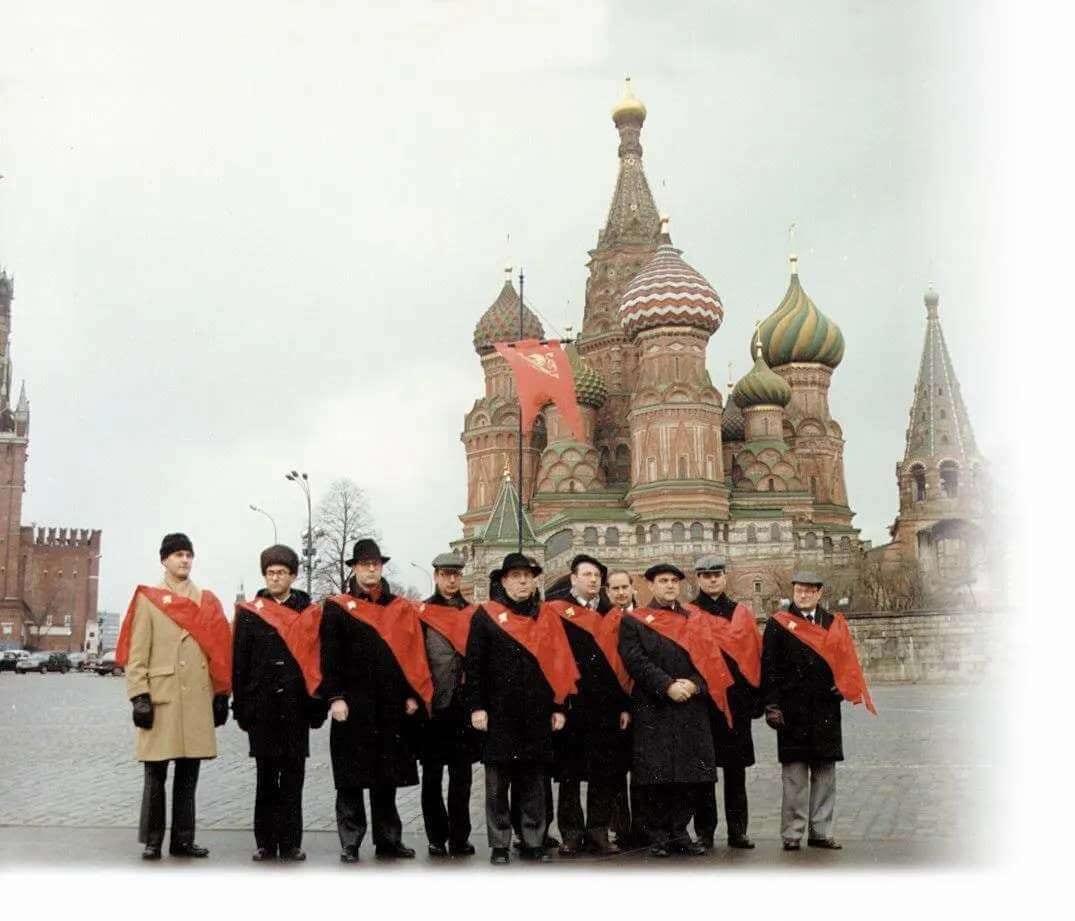
30 years of Caravans to the Land of Mary
Since 1993 the TFPs have sent a delegation to visit Lithuania every year in the last week of August and the first week of September, maintaining the friendship of old while reaching out to the new generations of Lithuanians, already born under the wings of freedom.
To mark this important date, a commemorative cross was erected on the Hill of Crosses - a symbol of the Lithuanian struggle for freedom from Communism. The blessing was given by Bishop Eugenijus Bartulis of Šiauliai.

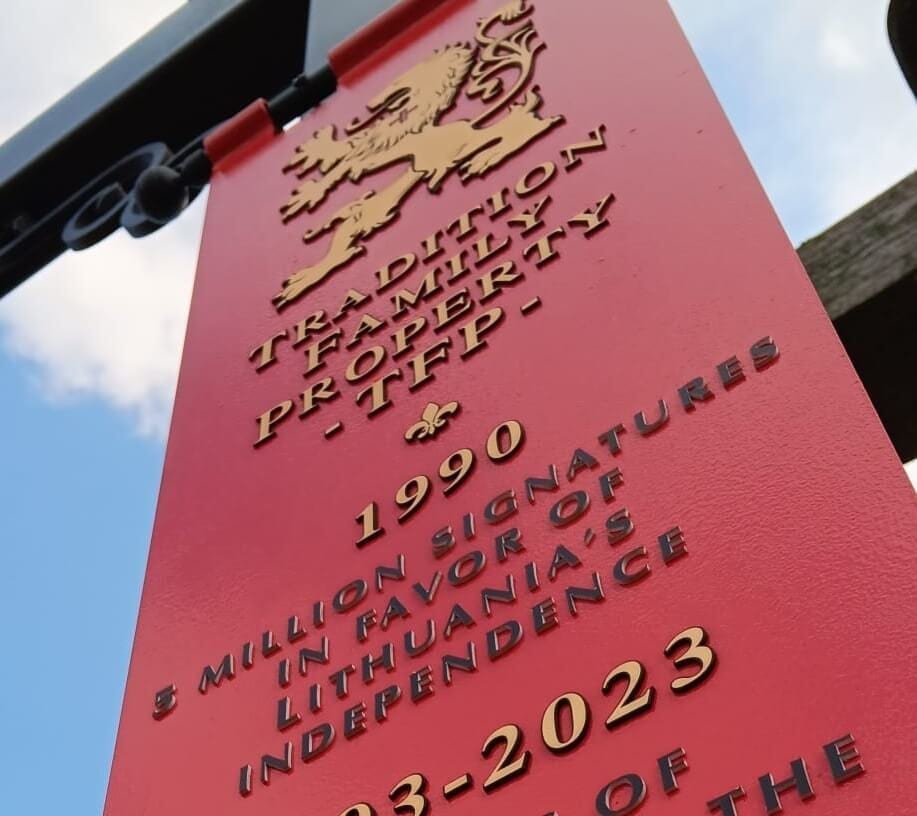
What is Hill of Crosses?
Hill of Crosses (Lithuanian: Kryžių kalnasi) is a site of pilgrimage about 12 km north of the city of Šiauliai, in northern Lithuania. The precise origin of the practice of leaving crosses on the hill is uncertain, but it is believed that the first crosses were placed on the former Jurgaičiai or Domantai hill fort after the 1831 Uprising. Over the generations, not only crosses and crucifixes, but statues of the Virgin Mary, carvings of Lithuanian patriots and thousands of tiny effigies and rosaries have been brought here by Catholic pilgrims. The exact number of crosses is unknown, but estimates put it at about 55,000 in 1990 and 100,000 in 2006. It is a major site of Catholic pilgrimage in Lithuania.
